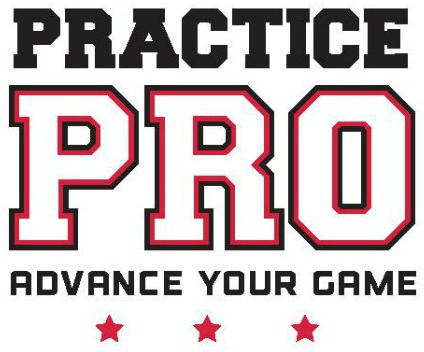Responsible for a Pitching Budget? 12 Smart Ways to Spend Your Money Wisely
/Starting a successful pitching journey demands time, dedication, and yes - investment. With an overwhelming amount of tools, programs, and coaches available, it can be both confusing and costly to decide where to begin. To simplify your journey, I've compiled a list of my favorite essentials for developing top-notch pitching skills.
1. High-Quality Pitching Instruction
First things first: invest in quality pitching lessons from Practice Pro. All advertising aside, formally learning to pitch is essential for competitive play and injury prevention. Watching YouTube videos can help a bit, but simply put, it takes too long to learn on your own.
2. Access to Dedicated Pitching Facilities
Having a full-length pitching space is a game-changer. Whether it’s a membership at a local baseball/softball facility, or setting up a lane in your basement, having a dedicated space ensures pitchers can train with consistency. If neither of these are an option, look for travel programs with access to indoor facilities, whether they own them or rent them, so you can train even during off-seasons or bad weather.
3. Good Travel Program
Quality competition is key to developing as a pitcher. Choose a travel program that offers both playing time and a tough schedule. A “tough” schedule is one with lots of games and stiff competition. .
4. Physical Conditioning Programs
When pitchers ask me, "How can I throw faster?" I tell them that beyond mechanics, athletic strength is the secret. Building core strength and speed adds velocity to pitches. For younger players, bodyweight exercises are great; older players might benefit from personal training or weightlifting. I added 5 mph to my own pitch speed in college by starting a weight-training program with my team.
5. Mental Toughness Training
Pitching isn’t just about physical skills; it’s also a mental game. Resources like sports psychologists, books, or mental training programs that focus on building confidence, composure, and resilience can make a huge difference. We incorporate mental training in every class at Pitching School to build well-rounded, confident pitchers.
6. Radar Gun
One of the first tools I purchased when I started coaching was a radar gun. It motivates pitchers to push their limits and track improvement by competing against their own best speeds. It’s a worthwhile investment that pays off as players strive to outdo themselves and fellow pitchers in class. $399
7. Giant Mirror
This may sound simple, but a mirror is incredibly helpful for refining mechanics. Once a pitcher knows what to look for from her lessons, practicing in front of a mirror allows her to self-correct and solidify good form. It’s an affordable tool that helps build the muscle memory needed for a smooth, repeatable motion.
8. Queen of the Hill Trainer
The Queen of the Hill is marketed to help pitchers push off faster, but we’ve found it useful for teaching “resistance” in the front leg—a difficult yet crucial concept in pitching. This tool gives players a clear feel for pushing and resisting, which improves their overall balance and power. $349
9. Pitching Mat
A good pitching mat, like the ones from All Turf Sports, costs about $200 and is worth every penny. These mats mimic the feel of real pitching surfaces and come with a power line for easy alignment. They’re durable, easier on shoes than pitching on the sidewalk, and provide a great way to practice indoors. $169
10. Ball on a Stick Tool
The ball-on-a-stick tool is a hidden gem. You can buy one for $26 or make your own. It helps pitchers understand the movement of the ball and the pressure they need to apply to create spin. I constantly get feedback from pitchers about how much this tool has helped them.
11. Electrical Tape
Here’s another simple one, but one that makes a huge difference in development of proper spin on all pitches. If you don’t have proper spin on the ball it’s either a sign you aren’t putting full force behind the ball or will not be able to make the ball move. We put a piece of black electrical tape around the outside of the ball so pitchers can see the spin on their ball. We ask them to rate the quality of their spin on a scale of 3 so that they can learn to practice on their own.
12. Notebook for Tracking Progress
A notebook may seem basic, but it’s a must-have for pitchers. Keeping track of practices and lessons helps players stay focused and reflect on what they’ve learned. Writing down drills and techniques improves retention, and reviewing notes can highlight areas for growth and keep players motivated.
Investing wisely in quality instruction, essential tools, and physical training programs can make a real impact on a pitcher’s journey. When you prioritize tools and training that build both physical and mental strength, you’re setting up pitchers for growth and long-term success. Whether you’re a parent, coach, or player managing your budget, these investments will help you reach the next level in pitching.


